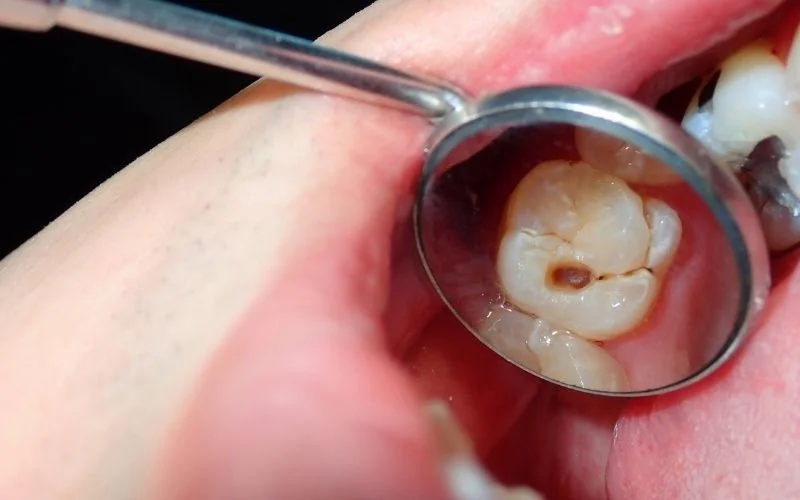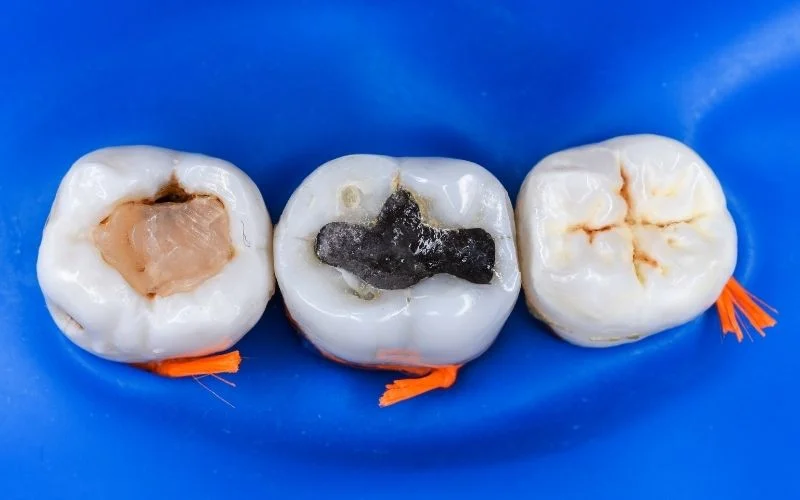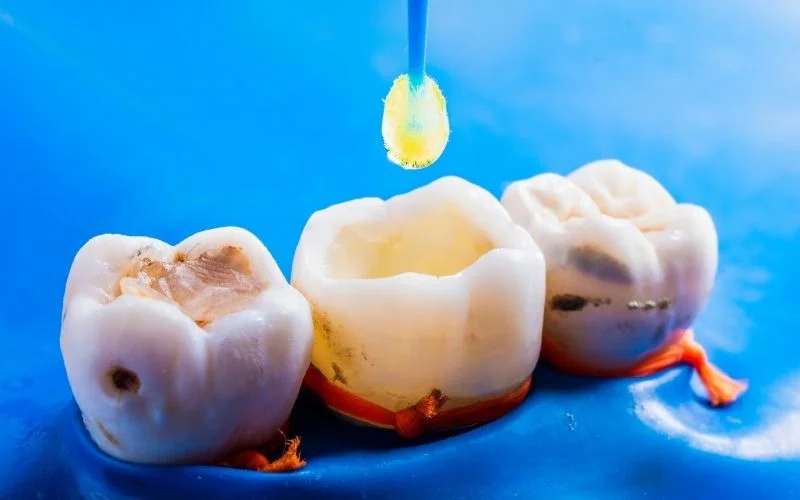



















Dental Fillings: Cost, Procedure, and Treatment Overview
Dental fillings are a common oral treatment used to fix teeth that have been damaged by cavities or other types of decay. As a popular way to fix early tooth problems, dental fillings are often the first time many people experience them.

When is a Dental Filling Necessary?
Getting tooth fillings is a popular and effective way to stop cavities from getting worse. The process includes using special filler materials to fix the structure and function of a tooth after removing decayed or broken parts of it. In the early stages of tooth decay, which are usually known as white spot lesions or surface stains, fillings are usually not needed. When decay reaches the middle or deeper layers of the tooth, a filling is needed to prevent additional decay.
Indications for Tooth Fillings
People usually get tooth fillings when the following things happen:
• There are small to medium-sized carious gaps, which means that decay has reached up to half of the tooth’s structure.
• Restoring a tooth looks good again after decay or small damage.

Contraindications for Tooth Fillings
Fillings for teeth might not be the best choice in some cases. These include:
- Severe damage that affects more than a third of the tooth’s crown, in which case a crown or other alternative restoration may be the better choice.
- Tooth decay below the gum line or situations where the tooth or gap can not be kept dry, as this can make the bonding process less successful.
- People grind their teeth all the time, which can cause the filling to wear out or fail early.
- A lot of tooth loss, especially if you have a direct or edge-to-edge bite (direct occlusion), which may mean you need a more thorough treatment plan.
If you think you might have tooth decay or need restoration, you should see a dentist right away. They can figure out the best way to treat you based on the damage, your bite, and your general oral health.
Types Of Tooth Fillings in Turkey:
Based on their purpose and duration, dental fillings might be temporary or permanent.
1. Temporary Fillings:
Most dental care involves temporary fillings during diagnosis or treatment. As an example, a dentist might put in a temporary filling to check the tooth pulp (nerve). After a certain time, discomfort may suggest pulp involvement, needing root canal therapy. Temporary fillings are also often used to cover a gap while the medicine is put inside the tooth. This helps keep the medicine separate and lets it work for a specific amount of time.

Zinc Oxide Eugenol Fillings
ZOE, which stands for zinc oxide powder and eugenol liquid (which comes from clove oil), is a widely used dentistry material. You mostly use it as a temporary filling or tooth cement because it seals well and is good for you.
Resin-Based Temporary Fillings
Resin-based temporary fillings are made of tooth-colored materials and are only used for a short time. These materials, which are made from composite resin or resin-modified glass ionomer, look better and last longer than temporary fillings like zinc oxide eugenol.
Glass Ionomer Temporary Fillings
Dental temporary restorations often use glass ionomer cement (GICs) owing to their chemical attachment to the tooth structure and fluoride release, which prevents decay. You can use these materials to make short-term fillings that last longer before setting in a permanent restoration like a crown or composite filling.
2. Permanent Fillings:
With a permanent tooth filling, you can fix both the structure and function of a broken tooth. Durable materials like composite resin, amalgam, ceramic, or gold make these restorations chew-resistant and wear-resistant.
Amalgam Fillings
In modern dentistry, amalgam fillings, which are metal alloys that contain mercury, are used rarely. This is mostly because the material does not look good, takes longer to properly place, and needs advanced clinical knowledge to do it right.
If you compare amalgam with modern tooth-colored materials, you can see that it stands out in your mouth because it is silver. However, amalgam is very sturdy and can last for decades. Because of this, it is usually only used on back teeth (molars), where looks are less important.
Composite Fillings
For fillings that are tooth-colored or white, composite fillings are a popular way to fix cavities and other small tooth damage. Composite materials, made of a resin matrix and small glass particles, match the patient’s teeth to provide a natural-looking, invisible result.
Ceramic Fillings
Some people call ceramic fillings, porcelain inlays, or onlays a very long-lasting and nice-looking way to fix broken or rotting teeth. These biocompatible ceramic restorations match the patient’s teeth’s color, shape, and translucency for a seamless look.
Gold Dental Fillings
Gold fillings used to be a popular choice in restorative dentistry because they were known to last a long time and work well with natural teeth. Even though they are not used very often these days, they were often chosen because they could handle strong chewing forces and would not rust. In fact, if you take good care of your gold restoration, it can last 15 years or more.
Despite these benefits, gold fillings are less common due to their expensive cost, prominent look, and rising preference for more attractive materials.
Glass Ionomer Fillings
Glass ionomer fillings, which are also called glass and acrylic fillings, are a type of tooth restoration material that is made up of both acrylic and small pieces of glass. If you need dental crowns for your child’s teeth, these are the ones that are most often used in pediatric dentistry.
Resin Ionomer Fillings
RMGI fillings, which stand for resin ionomer fillings, are a type of tooth restoration material that blends the good qualities of GIC (glass ionomer cement) and composite resin. Combining these two types of ingredients makes a tooth-colored substance that releases fluoride and is stronger than regular GICs.
Procedure to Get Dental Fillings In Turkey:
Dental fillings are common and easy to get, and most people only need one visit for this treatment. The process starts with a dentist’s exam. During this exam, the dentist will look at the tooth decay and decide if a filling is the best way to treat it. The intensity or location of the damage may suggest different treatments.
After confirming a filling, the process usually goes like this:
- Initial Examination: Your dentist checks for cavities and structural damage and discusses treatment choices, including filling material.
- Anesthesia Administration: They will use a local anesthetic to numb the area if the decay is large or close to a nerve. Some small situations might not need anesthesia.
- Decay Removal: Using special tools like a dental drill, laser, or air abrasion device, the dentist cuts out the damaged part of the tooth. If you numb the area well, this step will not hurt.
- Cavity Cleaning: Once the decay is gone, the cavity is cleaned well to get rid of any leftover dirt or germs. This is necessary to avoid infection or problems behind the filling.
- Filling Placement: You choose the filling material (composite, amalgam, clay, etc.) and apply it on in layers. Different types of materials may need different kinds of lights to dry or harden each layer.
- Shaping and Polishing: After placing the filling, the dentist molds it to fit your tooth’s natural curves for a correct bite and smooth surface. It is then cleaned to make it more comfortable and last longer.
- Post-Treatment Instructions: Some people tell you to stay away from hard or sticky foods for a short time while the filling sets completely. After that, you can go back to your normal dental care practice, which includes brushing and cleaning.
How Much Does It Cost to Get Dental Fillings in Turkey?
Teeth Implants Turkey uses modern, serene methods to make sure that all of their patients are as comfortable as possible during dental filling treatments. To provide high-quality, patient-centered care, our clinics use innovative equipment and follow standards that are known all over the world.
There is no one treatment plan that works for everyone because each patient has different needs and mouth health problems. We never compromise on quality and only use high-end products that have been tested in clinical settings. Due to our dedication to quality, every filling we do lasts, looks good, and is carefully and precisely placed.
Which Dental Filling Option is Right for You?
Before choosing a dental filling material, consider its ups and downs. Patients should research alternative materials, but a dentist should make the ultimate decision based on their dental requirements, cavity location, and oral health.
Patients wanting a natural-looking restoration use porcelain ceramic fillings. These fillings are appropriate for visible places since they match natural teeth in color and translucency. Cosmetic dentistry often uses ceramic owing to its beauty. It is more delicate and costlier to replace than other materials.
Composite fillings are cheaper than ceramic and tooth-colored. Composite fillings, made of resin and tiny glass particles, balance beauty and usefulness for front and back teeth.
Silver amalgam fillings are one of the most durable and affordable choices. Metal fillings are strong and wear-resistant, making them ideal for molars and high-bite zones. Silver teeth are very noticeable and unattractive for aesthetic-conscious people, particularly front teeth.
Advantages of Getting Dental Fillings:
Fillings are an important part of restorative dentistry. In addition to fixing cavities, they stop further damage to your teeth, improve their function, and help you keep your natural smile. These are some of the most important reasons to get a dental filling:
1. Long-lasting Results
The material used determines how long dental fillings last, but most last between 7 and 10 years. Your dentist can track the state and replace them as needed if you go in for frequent checkups.
2. Prevents Cavity Progression
Fillings preserve teeth from further damage and infections by getting rid of decay and closing the tooth.
3. Strengthens the Natural Tooth
If decay has damaged tooth structures, fillings can strengthen and restore their longevity.
4. Restores Tooth Function
Fillings can fix broken or worn teeth, even ones that have been damaged by grinding your teeth (bruxism), allowing you to chew and function normally again.
5. Enhances Appearance
Tooth-colored fillings make your smile look better by reshaping and returning your teeth’s natural shape. This is especially true for your front teeth.
6. Prevents Further Decay
Fillings cover weak spots so that bacteria and food bits cannot cause decay to happen again and again. They help keep your mouth clean and your teeth healthy over time.
7. Fluoride-Releasing Protection
Some materials, like glass ionomer, can release fluoride, which helps enamel remineralize and protects against cavities even more.
8. Offers Preventive Care
Preventative fillings may save teeth with deep grooves or early damage from more comprehensive restorations.
What is the Typical Timeframe for Dental Fillings in Turkey?
Putting in a single dental filling at Teeth Implants Turkey usually takes 30 to 60 minutes, but this depends on the size, location, and type of filling provided. Most of the time, the process only takes one visit.
The meeting may last longer for people who need more than one filling or who have more complicated restorations. Your dentist will make a treatment plan and time estimate that is specific to your needs so that you are relaxed and the process goes quickly.
Are There Alternatives to Dental Fillings?
Unfortunately, dental fillings are still the most common way to fix cavities and other small tooth damage. However, there are other options available based on how bad the damage is and where it is located.
Too much rot or damage to the tooth structure may lead to a dentist suggesting removing the tooth and then replacing it with dental implants or bridges. However, there are often less invasive options available:
1. Inlays and Onlays
Dental inlays and onlays are indirect restorations that are best for fixing mild to serious tooth damage that a regular filling cannot fix. Onlays cover one or more cusps and fit inside the tooth, while inlays fit into the tooth’s surface.
- The materials used to make them are strong, like ceramic or composite plastic.
- They are durable. If you take good care of your inlays and onlays, they can last up to 30 years.
- These restorations make the tooth stronger than regular fillings and bring back its shape and function.
2. Dental Veneers
If you want to fix the look of your cracked, chipped, or slightly damaged front teeth, dental veneers are an option. Thin porcelain shells are attached to the front of teeth to make them look better. Veneers can change the color, shape, and appearance of teeth.
- Hide small problems with the structure or damage to the surface
- Only cover some early decay or enamel wear as a protection measure
3. Dental Crowns, Bridges, and Implants
More extensive treatment choices may be needed when a tooth is badly damaged, broken, or missing:
- A dental crown can cover and protect a tooth that is weak or has had root canal treatment.
- A dental bridge can replace one or more lost teeth by attaching to healthy teeth next to the gap.
- A dental implant replaces the whole tooth, including the root, and is strong, long-lasting, and useful.
When you come to Teeth Implants Turkey, we can make all of our restoration and cosmetic dental services fit your needs. Our skilled professionals are here to help you get long-lasting results that look natural, whether you are dealing with small damage or serious mouth health problems.
Start Creating Your Treatment Plan!
You can contact us by filling out the pre-request form.


